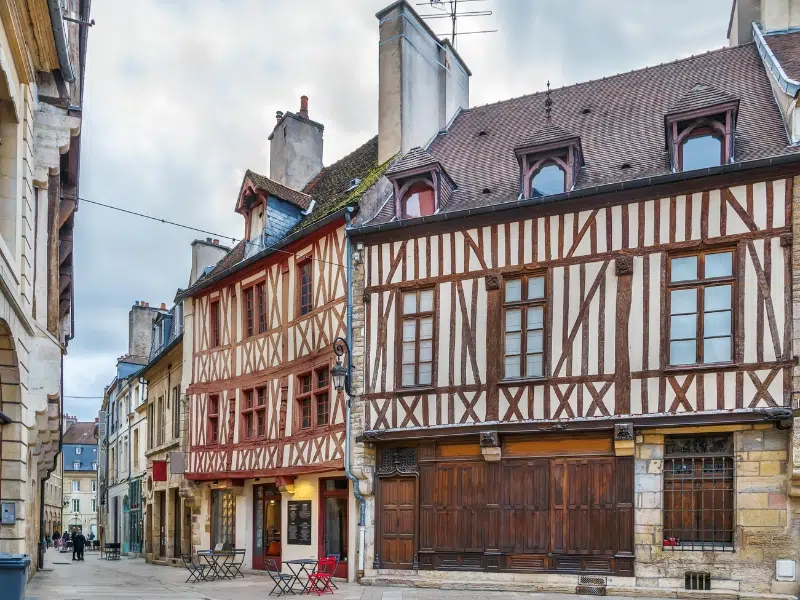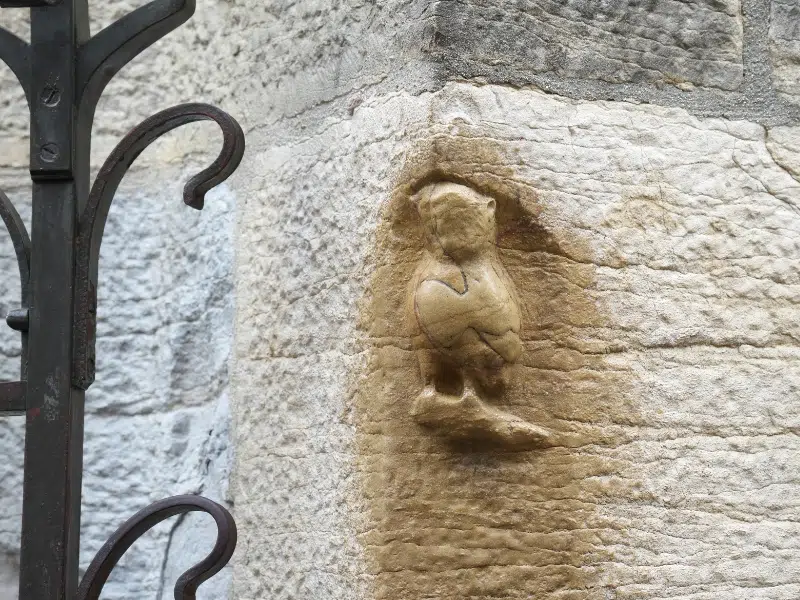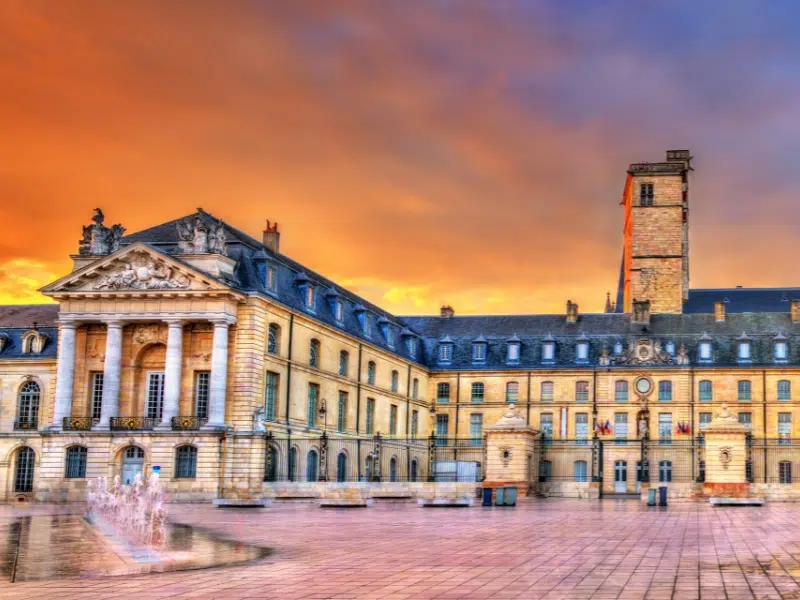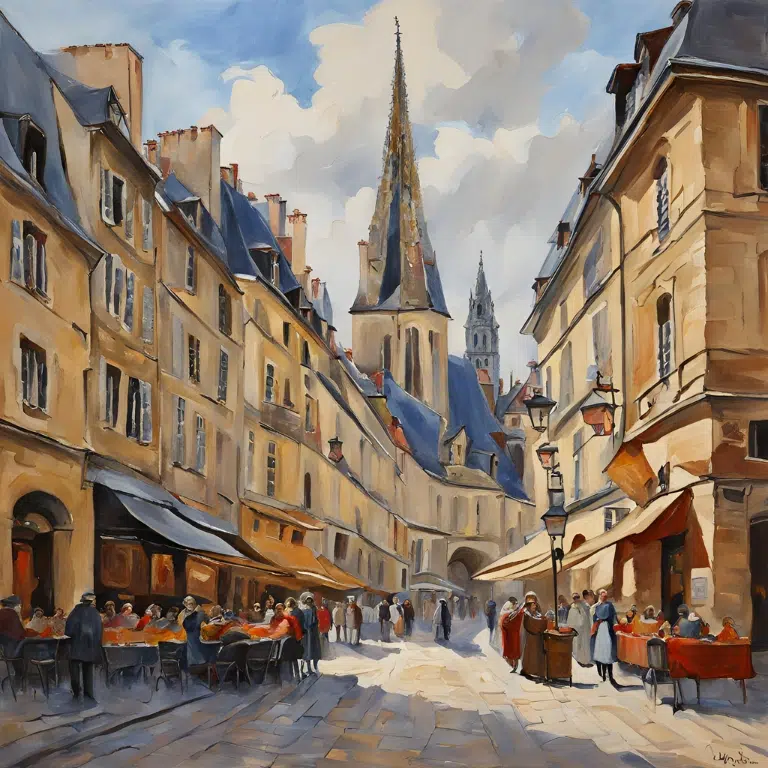
Table of Contents
Dijon, a hidden gem in eastern France, beckons travelers with its rich history, delectable cuisine, and stunning architecture. Explore the charming streets of the historic center, marvel at the iconic Palace of the Dukes of Burgundy, and indulge in the renowned Dijon mustard. Immerse yourself in the city’s vibrant culture, visit world-class museums, and savor the finest Burgundian wines. Dijon, a captivating destination for those seeking an authentic French experience.
Key features of Dijon
- Historic Capital of Burgundy: Dijon was the capital of the powerful Duchy of Burgundy, leaving a rich legacy of medieval and Renaissance architecture.
- Palace of the Dukes of Burgundy: This iconic palace houses the Museum of Fine Arts, showcasing a vast collection of art and artifacts.
- UNESCO World Heritage Site: The historic center of Dijon is recognized by UNESCO for its well-preserved medieval and Renaissance buildings.
- Dijon Mustard: The city is world-renowned for its high-quality mustard, a staple of French cuisine.
- Owl Trail: Follow the charming owl statues throughout the city to discover its hidden gems and historical sites.
- Gothic Architecture: Admire the stunning Gothic architecture of Notre-Dame de Dijon, a masterpiece of religious art.
- Fine Dining and Wine: Indulge in Dijon’s culinary delights, from Michelin-starred restaurants to traditional bistros, and savor the finest Burgundian wines.
- Vibrant Markets: Explore the lively local markets, offering fresh produce, artisanal goods, and regional specialties.
- Cultural Events: Experience the city’s rich cultural scene with festivals, concerts, and exhibitions throughout the year.
- Charming Old Town: Wander through the picturesque streets of the old town, lined with half-timbered houses and boutique shops.

Fun Facts about Dijon
- The Owl’s Good Luck: Dijon’s symbol is the owl. Touching the owl sculpture on Notre-Dame cathedral with your left hand is believed to bring good luck.
- Mustard Capital: Dijon is synonymous with mustard. The city’s unique mustard-making tradition dates back centuries.
- A Culinary Haven: Dijon is a foodie’s paradise, offering delicious local cuisine and world-class wines from the Burgundy region.
- Medieval Marvels: The historic center of Dijon is a UNESCO World Heritage Site, boasting stunning medieval and Renaissance architecture.
- Ducal Delights: The Palace of the Dukes of Burgundy is a magnificent historical landmark, housing the Museum of Fine Arts.
- Market Madness: Dijon’s vibrant markets offer a feast for the senses, showcasing fresh produce, artisanal goods, and local delicacies.
- A Cultural Melting Pot: The city hosts various cultural events, including music festivals, art exhibitions, and historical reenactments.
- A Wine Lover’s Dream: Dijon is located in the heart of Burgundy, one of the world’s most renowned wine regions.
- A Bicycle-Friendly City: Dijon is a great city to explore by bike, with numerous cycling paths and bike-sharing stations.
- The City of 100 Spires: Dijon is often nicknamed “The City of 100 Spires” due to its numerous church spires that dot the skyline.

Local legends about Dijon
- The Lucky Owl: The owl, a symbol of wisdom and protection, graces the facade of Notre-Dame de Dijon. Legend has it that touching its left wing while making a wish will bring good fortune. Many locals and visitors alike partake in this tradition, hoping to secure their desires.
- The Secret Tunnels: Beneath the bustling streets of Dijon, it is whispered that a network of secret tunnels exists. These subterranean passages are said to connect the Palace of the Dukes of Burgundy to other significant landmarks, offering a glimpse into the city’s hidden history.
- The Ghostly Gardener: The serene gardens of the Palace of the Dukes of Burgundy are said to be haunted by the spirit of a former gardener. At the stroke of midnight, his spectral form is believed to appear, tending to the flowers and pruning the hedges.
- The Cursed Treasure: A long-lost treasure, said to be hidden somewhere within the city walls, is guarded by a powerful curse. It is rumored that anyone who attempts to claim the treasure will be met with misfortune and despair.
- The Phantom Piper: A mysterious figure, known only as the Phantom Piper, is said to wander the streets of Dijon, playing haunting melodies on his flute. His music lures unsuspecting listeners into the city’s darkest corners, where strange and inexplicable events occur.
- The Dragon’s Lair: In the ancient forests surrounding Dijon, a fearsome dragon is said to have once made its home. Its fiery breath and sharp claws terrorized the local populace until a brave knight defeated the beast and sealed it away in a hidden lair.
- The Witch’s Well: A secluded well, nestled deep within the surrounding countryside, is shrouded in mystery and legend. It is said to be a gateway to the underworld, where witches and other supernatural beings gather to perform dark rituals and cast wicked spells.

What about the history of Dijon?
Dijon, a city steeped in history, has its roots dating back to the Neolithic period. It later became a Roman settlement known as Divio, situated along the strategic route between Lyon and Paris.
Gallo-Roman Origins and Medieval Rise (1st-15th Centuries)
Situated on a strategic trade route, it prospered as a commercial center. The city’s fortunes truly soared during the Middle Ages, especially under the powerful Dukes of Burgundy. The dukes transformed Dijon into a cultural and artistic hub.
The Golden Age of Burgundy (14th-15th Centuries)
The dukes, with their vast wealth and patronage, commissioned magnificent buildings and artworks. The Palace of the Dukes of Burgundy, a stunning example of Gothic architecture, stands as a testament to this era. Dijon became a center of learning and innovation, and its influence extended across Europe.
Decline and Revival (16th-19th Centuries)
Following the Burgundian period, Dijon experienced a decline in its political and economic importance. However, the city continued to play a significant role in regional affairs. The French Revolution brought about significant changes, but Dijon managed to preserve its historical heritage.
Modern Dijon (20th Century-Present)
World War II inflicted damage on the city, but it emerged stronger, rebuilding its historic center and embracing modernity. Today, Dijon is a vibrant city that seamlessly blends its rich history with contemporary culture. It is renowned for its stunning architecture, world-class museums, and delectable cuisine, making it a popular tourist destination.
Must-Try Food in Dijon

Dijon Mustard
A versatile condiment made from mustard seeds, vinegar, and spices. Dijon mustard adds a tangy kick to sandwiches, cheeses, and charcuterie boards. It’s also a key ingredient in many sauces and dressings.
Oeufs en Meurette
A classic Burgundian dish featuring poached eggs bathed in a rich, velvety red wine sauce. The eggs are cooked to perfection and the sauce is full of flavor, often enhanced with herbs and spices. It’s a comforting and elegant meal.
Boeuf Bourguignon
A hearty and flavorful beef stew made with tender beef braised in red wine with mushrooms, carrots, and onions. The slow-cooking process allows the flavors to meld together, resulting in a rich and satisfying dish. It’s often served with buttery mashed potatoes or crusty bread.
Escargots de Bourgogne
A gourmet delicacy, these snails are cooked in garlic butter and herbs, often served in their shells. The garlic butter is infused with parsley and other herbs, creating a flavorful and aromatic sauce. It’s a unique and memorable dining experience.
Pain d’Épices
A traditional gingerbread that’s perfect for a sweet treat. It’s often flavored with honey, spices, and sometimes nuts or candied fruit. The gingerbread is dense and moist, with a warm and comforting flavor. It’s often enjoyed with a cup of coffee or tea.
Crème de Cassis
A blackcurrant liqueur that’s perfect for sipping on its own or as a cocktail ingredient. The liqueur is made from blackcurrants, sugar, and alcohol, and it has a sweet and tart flavor. It’s a popular ingredient in cocktails like the Kir Royale.
Burgundy Wines
The Burgundy region is renowned for its world-class wines, particularly Pinot Noir and Chardonnay. Pinot Noir from Burgundy is often characterized by its elegance, complexity, and earthy flavors. Chardonnay from Burgundy can range from light and crisp to rich and buttery. These wines pair well with the rich flavors of Burgundian cuisine.
Must Visit Attractions in Dijon
The Garden of the Bells (Jardin des Cloches) A serene oasis in the heart of Dijon, the Garden of the Bells offers a peaceful escape from the bustling city. Its tranquil ambiance, lush greenery, and beautiful flowerbeds make it a popular spot for relaxation and contemplation.
The William Gate (Porte Guillaume) A historic gateway to the city, the William Gate is a remarkable piece of medieval architecture. Its imposing structure and defensive features offer a glimpse into Dijon’s past.
Saint-Bénigne Cathedral A masterpiece of Gothic architecture, Saint-Bénigne Cathedral is renowned for its stunning stained glass windows and intricate stonework. Its towering spires are a prominent landmark in Dijon’s skyline.
Place François Rude A vibrant square in the heart of Dijon, Place François Rude is lined with charming cafes, restaurants, and shops. The square is also home to the famous “Birth of Venus” statue by François Rude.
Place de la Libération A majestic square dominated by the Palace of the Dukes of Burgundy, Place de la Libération is a popular gathering spot for locals and tourists alike. It’s a great place to relax, people-watch, or enjoy a meal at one of the many outdoor cafes.
Palace of the Dukes of Burgundy (Palais des Ducs et des États de Bourgogne) A magnificent historical landmark, the Palace of the Dukes of Burgundy is a must-visit for history buffs and art lovers. It houses a fascinating museum with collections of art, history, and archaeology.
Museum of Fine Arts Dijon A world-class museum with a diverse collection of art, ranging from ancient to modern times. The museum boasts impressive works by renowned artists such as Botticelli, Caravage, and Bourdelle.
Dukes Square (Place des Ducs) A charming square located in front of the Palace of the Dukes of Burgundy. It’s a picturesque spot to admire the historic buildings and soak up the atmosphere of old-world Dijon.
Church of Our Lady (Église Notre-Dame) A beautiful Gothic church known for its stunning stained glass windows and intricate stonework. The church is also home to the tomb of Saint Bernard, a revered figure in the Catholic Church.
Central Market (Halles centrales et marché central) A vibrant market offering a wide range of fresh produce, local delicacies, and regional wines. It’s a great place to experience the local culture and indulge in some delicious food.
This walking tour will take you through the heart of Dijon, allowing you to experience the city’s rich history, stunning architecture, and cultural significance.

Explore Dijon with World City Trail
Embark on an unforgettable journey through the enchanting city of Dijon with World City Trail. Our interactive walking tour combines the thrill of exploration with the rich history and culture of this beautiful city.
Key Features:
- Interactive gameplay: Solve engaging puzzles and challenges as you explore the city.
- Iconic landmarks: Discover famous attractions like the Palace of the Dukes of Burgundy or the Saint-Bénigne Cathedral.
- Hidden gems: Uncover lesser-known spots, such as the Garden of the Bells or the Museum of Fine Arts.
- Cultural insights: Learn about Dijon’s fascinating history, from its Roman origins to its Burgundian heyday.
- Flexibility: Explore at your own pace and create your own itinerary.
Learn more fun facts about Dijon!
Book your Dijon adventure today and experience the magic of this beautiful city.

Dijon Scavenger Hunt and Self Guided Tour
<div class="wp-block-uagb-tabs uagb-block-a029b1f4 uagb-tabs__wrap uagb-tabs__hstyle1-desktop uagb-tabs__vstyle…
